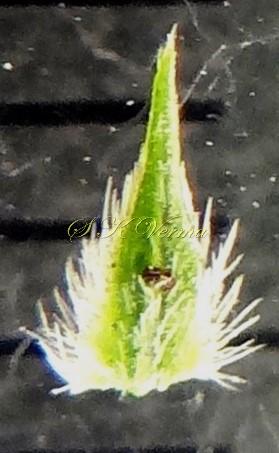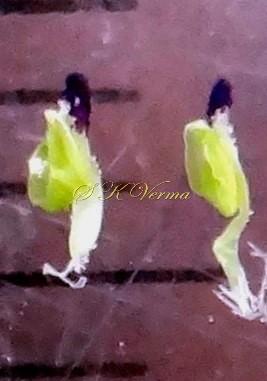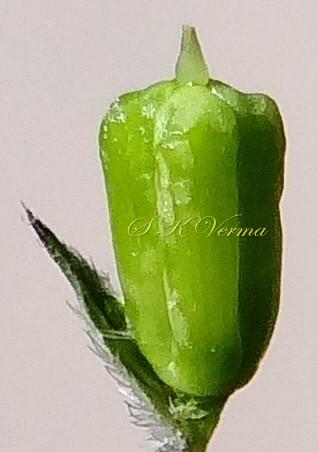VERBENA
Verbena
L., Sp. Pl. 2: 20. 1753; Gen. Pl. ed. 5: 12. 1754; Clarke in Hook. f., Fl. Brit. Ind. 4: 565. 1885; Fl. Pak. @ eFloras.org p. 3.
Perennial herbs or subshrubs, erect, prostrate or creeping with ascending flowering branches, subglabrous to hairy plants with glandular and non-glandular trichomes. Leaves opposite-decussate, rarely whorled. Inflorescence spicate, rarely pseudoumbellate or fascicled, terminal, rarely axillary. Flowers bisexual, slightly zygomorphic, hypogynous, small or moderate in size, sessile, bracteate, bracts with ciliate margin. Calyx cylindrical-tubular, 5- ribbed, unequally shortly 5-toothed, persistent, not enlarging in fruit. Corolla gamopetalous, salverform, 5-lobed, somewhat 2-lipped and lobes subequal, oblong to obovate. Stamens usually 4, epipetalous, didynamous, included; anthers ovate, connective with or without a glandular appendage. Carpels 2, syncarpous; ovary entire to 4-lobed, 4-locular with 1 ovule in each loculus; style reaching the level of stamens, filiform; stigma bilobed. Fruit schizocarpic, enclosed within persistent calyx, separating into 4 nutlets; seeds oblong, angular.
150 species
Verbena bipinnatifida
Verbena bipinnatifida
Schauer in A.P. de Candolle, Prodr. 11: 553. 1847; Glandularia bipinnatifida (Schauer) Nutt., J. Acad. Nat. Sci. Philadelphia 2: 123. 1821.
Perennial, sometimes annual herb; erect, prostrate or creeping, with ascending flowering branches, rooting at nodes, (5-30)-60 cm tall (excluding inflorescence). Stem and branches quadrangular or subquadrangular, moderately to densely hirsute, eglandular. Leaves opposite; leaf blade 1-6 cm long, broadly ovate in outline, membranous, 1.2-2 times longer than wide, 1-2-pinnatifid, 3-parted or deeply incised, ultimate segments 2.5-3(-4) mm long and ca. 2 mm broad, linear to oblanceolate, hispid-hirsute to strigose, eglandular; midrib distinct with adpressed hairs abaxially; petiole 5-15(-22) mm long. Inflorescence umbel-like spike, ca. 3 cm in diameter, terminal, mostly solitary or in fascicles, elongating to 5-15(-20) cm in fruiting; inflorescence pedunculate, peduncle up to 16 mm long, hirsute. Flowers bisexual, slightly zygomorphic, hypogynous, oblique, sessile; bracts 3-4 (5) mm long, ovate or ovate-lanceolate, acuminate, outer surface hirsute, margin ciliate, inner surface glabrous. Calyx cylindrical-tubular, 8-8.5 mm long, with 5 ribs; teeth 5, unequal, 0.5-1.7 mm, subulate, persistent; external surface hispid and strigose, eglandular or sometimes sparsely stipitate glandular, internal surface glabrous. Corolla salverform, purple, lavender or bluish; tube 9-14 mm long, white, glabrous externally, densely retrosely hairy inside; limb 5-lobed, obscurely 2-lipped, oblique to tube, 9-15 mm in diameter, upper lip 2-lobed and lower lip 3-lobed, lobes 5-6 mm x 3-5 mm, obcordate or emarginate; mouth densely villous, trichomes moniliform. Stamens 4, included, didynamous, inserted near the mouth of corolla tube; anthers ovate, ca. 1 mm long; connectives of anthers of superior (upper) pair protruded apically into stipitate glandular appendage ca. 1 mm long surpassing the thecae and weakly exserted from corolla mouth. Carpels 2, syncarpous; ovary ca. 1 mm long, 4-lobed, 4-locular, 1 ovule per loculus; style filiform, ca. 10 mm long; stigma bifid with a gland. Fruit a dry schizocarpic composed of 4 cylindrical mericarps/ nutlets, 2.5-3.2 mm long, not broadened at base, black, commissures not reaching the apex, 1/3-1/2 as wide as nutlet apex, apical appendages absent.
Common Names: Moss Verbena, South American Mock Vervain
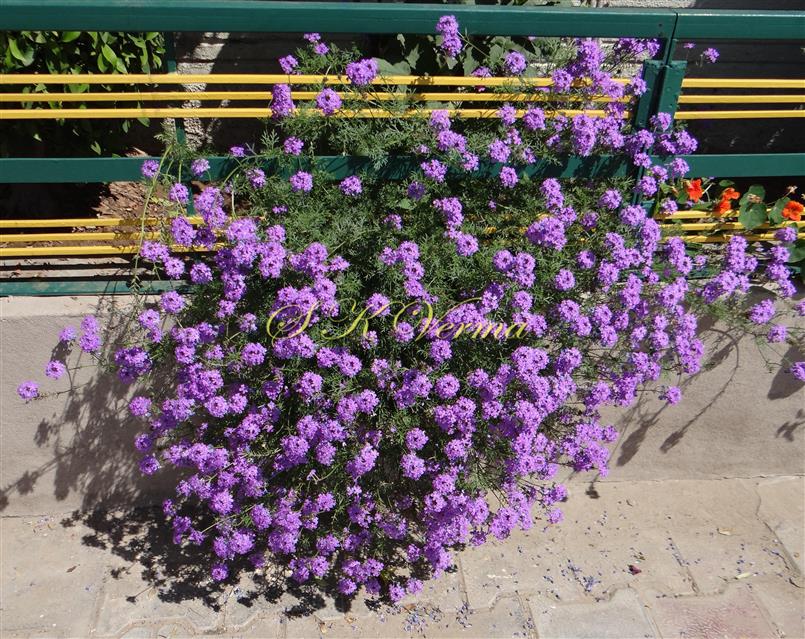
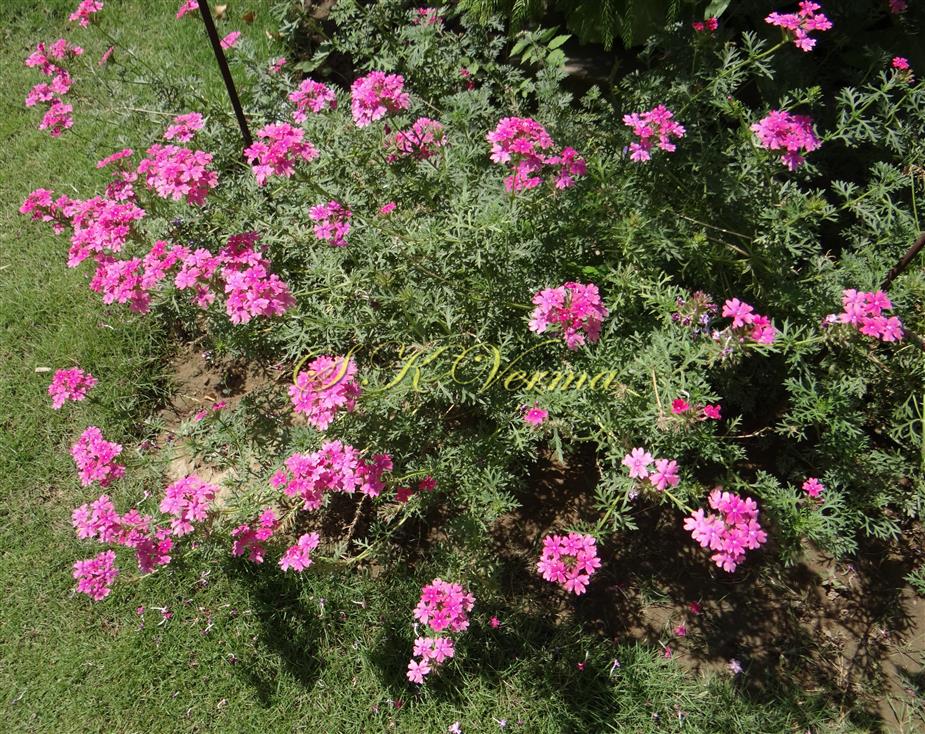
-DSC02833.jpg)
-DSC09964.jpg)
-DSC03797.jpg)
-DSC03799.jpg)
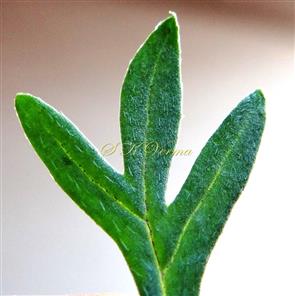
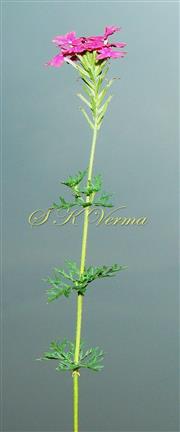
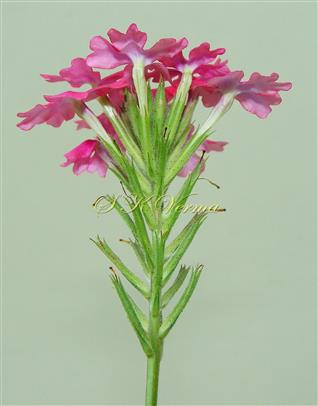
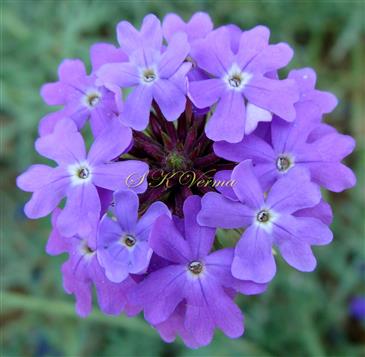
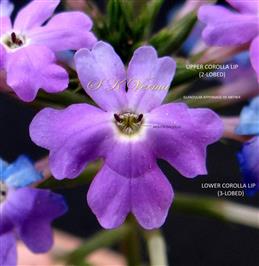
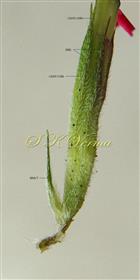
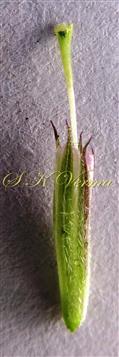

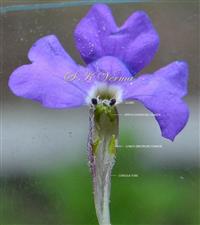


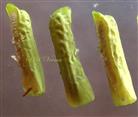



-DSC02833.jpg)
-DSC09964.jpg)
-DSC03797.jpg)
-DSC03799.jpg)







